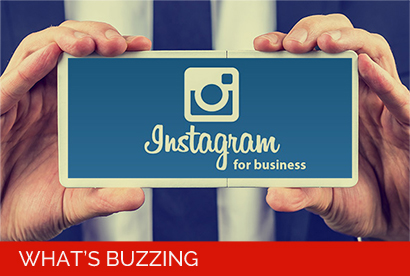The Instagram Updates We’ve All Been Waiting For

Instagram just rolled out two new features back to back: An updated Instagram Direct feature and Instagram Ads.
What is Instagram Direct?
Starting with Instagram Direct, which was launched by the network in 2013, now has an updated feature much to the delight of Instagram users. The feature allowed users to directly share ‘instagrammed’ pictures with one person or a group. The app will now support threaded messages and allow its users to send content from their feed as a Direct message. So now, users can share a picture with just one friend or a select group of friends via the Direct Message and send text messages around the photo or video they have shared. Due to Threaded Messages, the user won’t have to go through the hassle of creating a new conversation every time they send a photo or video.
Privacy in this new feature won’t be an issue. If you’re not following someone and they send you a message, it will be marked "pending." The same will appear as a message request. It is up to the recipient whether they choose to accept or decline the message. Declining the message means they will not get further messages from the sender and they can even block the user.
And finally, we have the Instagram Ads…
Another major break through from Instagram is that the platform has officially switched on its API (Application Programming Interface) for ads, albeit at a slow pace.
Technically, this change means that ads can now be posted on Instagram by anyone. Practically, it means that Instagram is officially open for business.
Instagram has always been a desired target for marketers. The platform is considered to have outperformed Twitter and LinkedIn with regards to active users and to now be second in size only to Facebook(parent company). Also, while growth at Twitter and Facebook is largely increasing, Instgram expanded at an incredible 50% in 2014. Its users are remarkably younger than those on other platforms. 44% of people on Instagram are between 18-29 years of age, in contrast to 23% on Facebook and 33% on Twitter.
Reaching the above mentioned users through advertising however has not been easy. Instagram has always been careful in rolling out ads. The network began testing the scenario with photo-based ads in 2013 and adding video ads last year. However, all this has now changed. Ads can now be purchased by anyone with the help of online ad-buying tools extended by official Instagram partners. Instead of negotiating with a sales person over the phone, businesses can now log onto third-party sites to create, target and place an ad.
A major portion of Instagram’s ad potential lies in the data amassment collected by its parent company.
But will this new feature put off Instagram’s faithful users, who now post more than 70 million images daily? The network is hoping that its slow and careful rollout will avoid any kind of user resistance. It now remains to see whether Instagram can keep both users and businesses happy.



